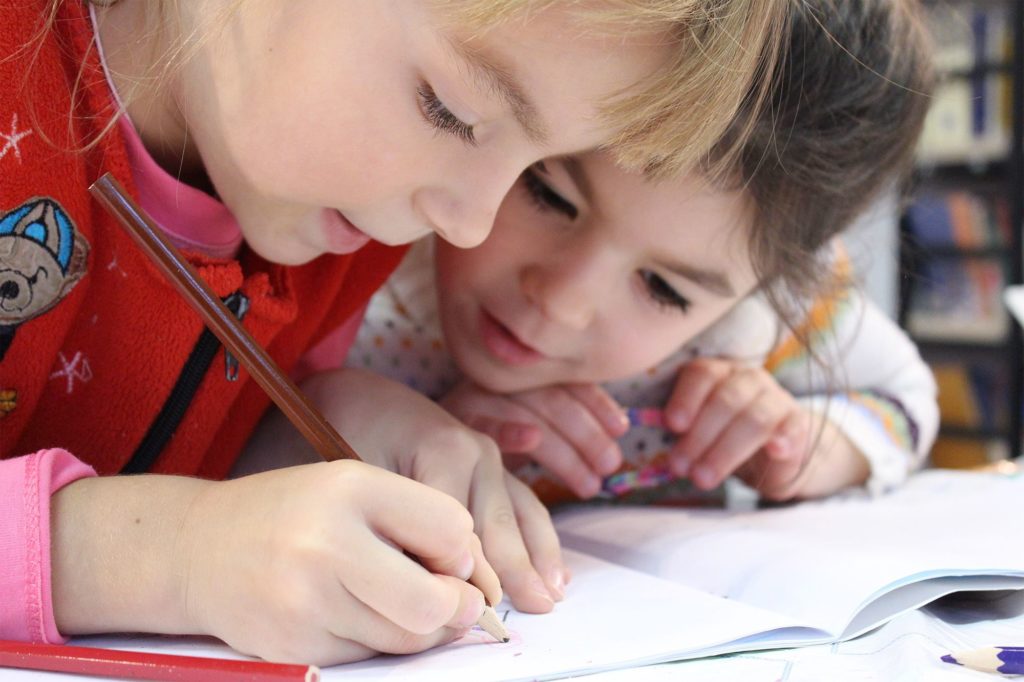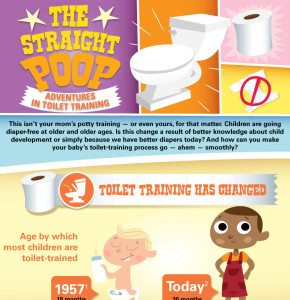The Straight Poop: Adventures in Toilet Training
This isn’t your mom’s potty training — or even yours, for that matter. Children are going diaper-free at older and older ages. Is this change a result of better knowledge about child development or simply because we have better diapers today? And how can you make your baby’s toilet-training process go — ahem — smoothly?
Toilet Training Has Changed
Age by which most children are toilet-trained
1957: 18 months
Today: 36 months
Why have things changed?
Disposable diapers: 90% of American babies wear disposable diapers
Long-term use of disposables could help foster a sense of complacency, both on the part of parents and kids:
- Disposable diapers are less time-consuming for parents to deal with.
- Wet disposables are more comfortable for babies than wet cloth diapers.
Change in conventional wisdom: Most parenting experts now advise waiting until the child shows interest in toilet training to start the process.
Potential pitfalls to this process:
- Children can become too accustomed to wearing diapers.
- The longer a parent (usually the mother) is a servant for the child, the more difficult it can be to make the child see the parent as an authority figure.
Elimination Communication
A growing number of parents in the U.S. are subscribing to a theory of toilet training that could mean forgoing diapers altogether. Also called natural infant hygiene, potty whispering and infant potty training, supporters contend you can start training a baby to use a potty almost from birth.
How? By paying attention to the child’s schedule, body language, feeding times and verbal cues.
It may sound crazy, but it’s how about half the kids in the world are raised. About 50% of the world’s babies will never wear a diaper and are fully potty trained by a year of age.
Step by step
Here’s how elimination communication works:
Baby grunts, indicating a need to defecate, or squirms, showing he’s about to urinate.
Reading these signals, take the baby and hold him over the toilet or place him on a potty-training toilet.
As he’s using the toilet, make a special sound (perhaps a “shhh”), so the baby realizes the connection between the sound and the experience.
You can still put your baby in diapers, but when you know he needs to go (if he’s just woken up or just been fed, for instance), you should take the diaper off and place him on or hold him over the toilet.
Speaking of Communication …
Just because your baby can’t say sentences doesn’t mean he or she can’t talk to you. Here’s a quick primer on some common baby sign language terms that most infants as young as 6 months can learn.
Mom:
Tap your thumb on your chin.
Dad:
Tap your thumb on your forehead.
Milk:
Open and close your hand.
Eat:
Place your hand to your mouth as though you’re eating.
All done:
Twist your hands back and forth.
More:
Tap your fingertips together.
Sources:
1. http://www.nytimes.com
2. http://www.med.umich.edu
3. http://www.pottytrainingconcepts.com
4. http://triadmomsonmain.com
5. http://www.pottytime.com
6. http://tlc.howstuffworks.com
7. http://www.mommyish.com
8. http://www.babysignlanguage.com


